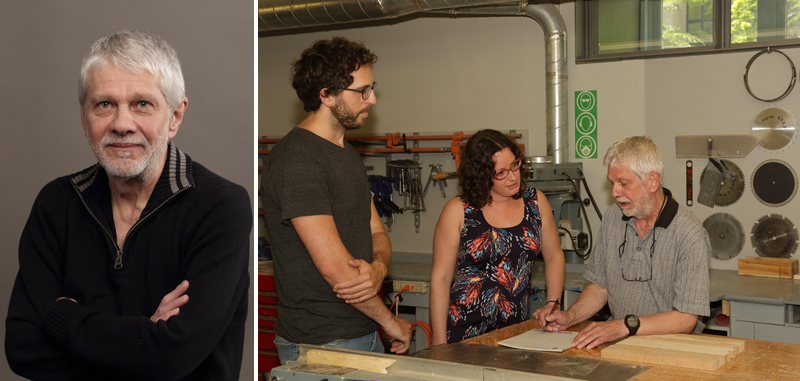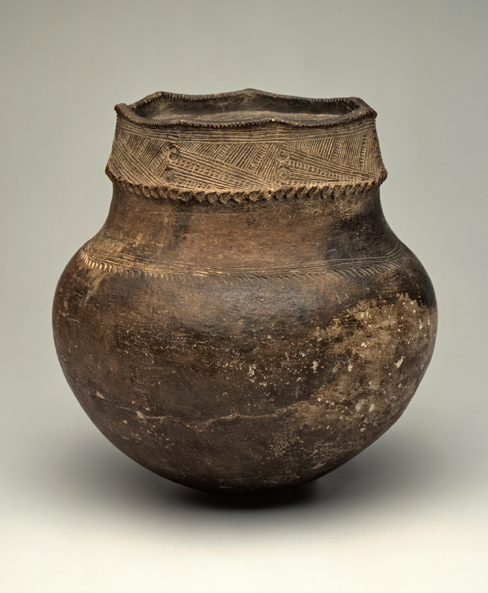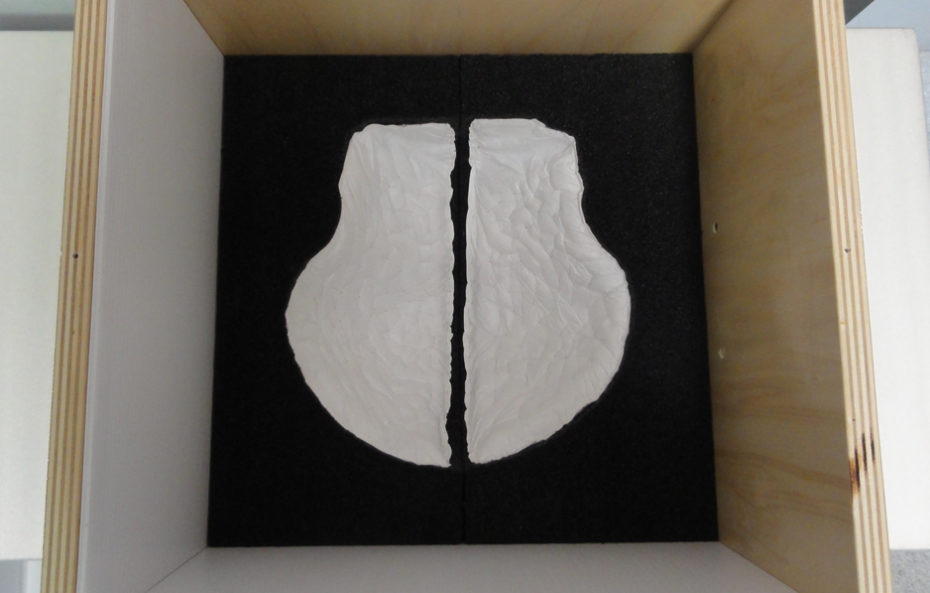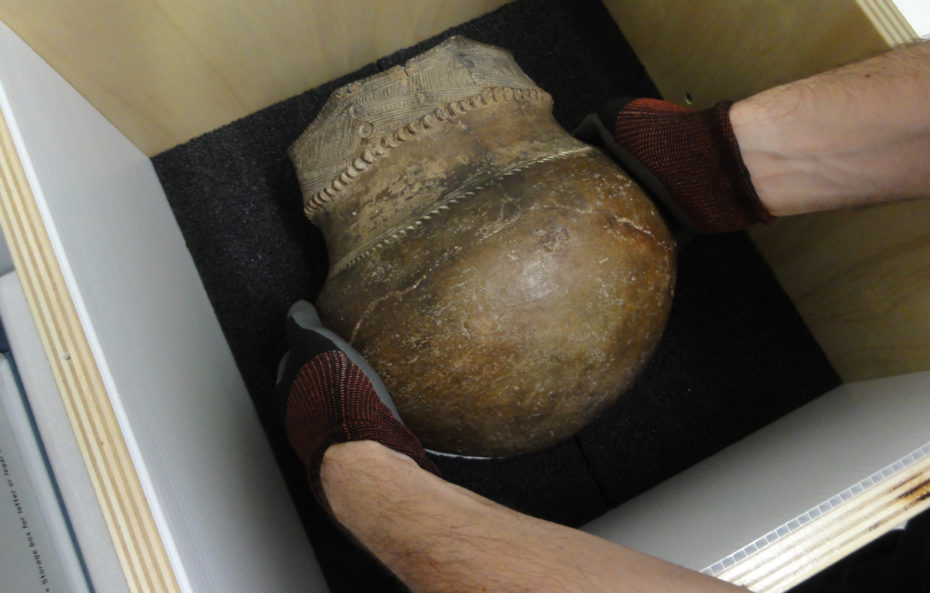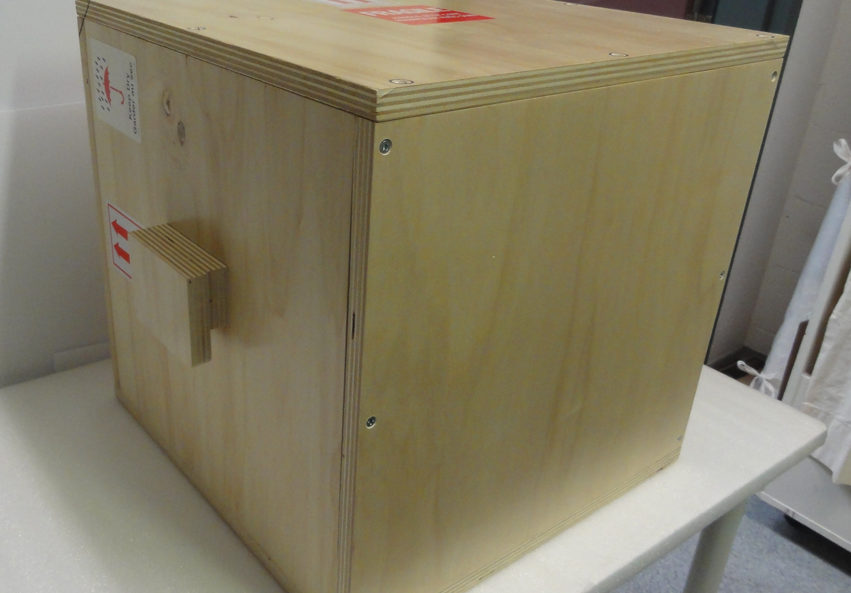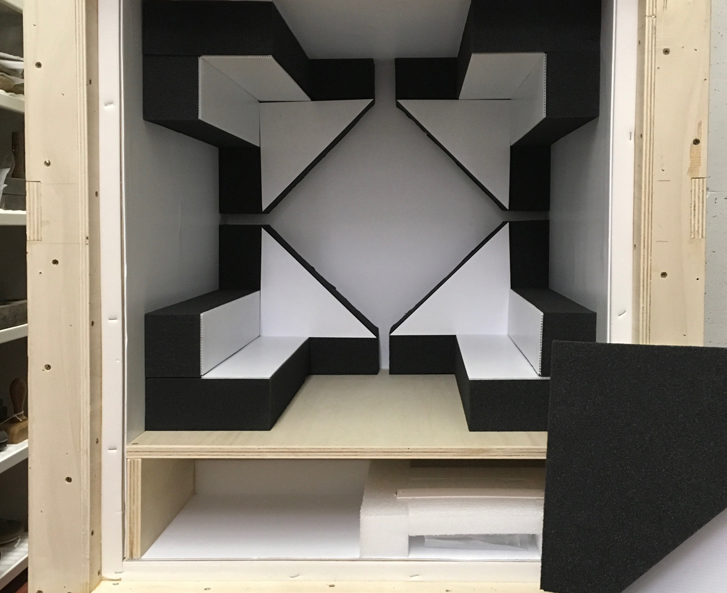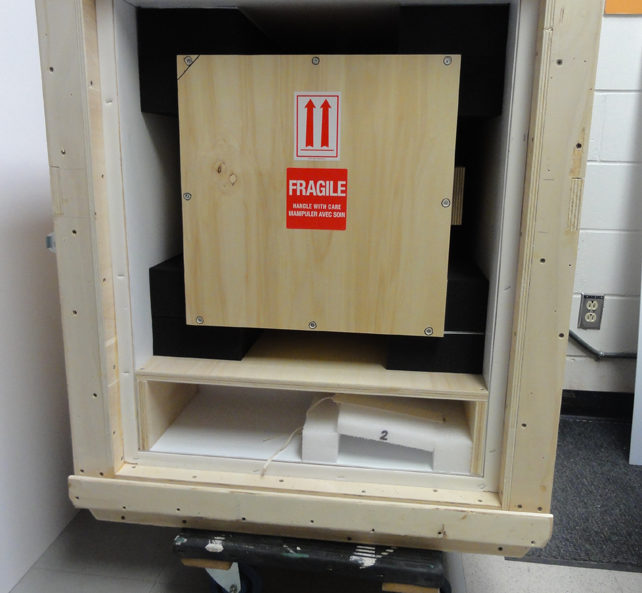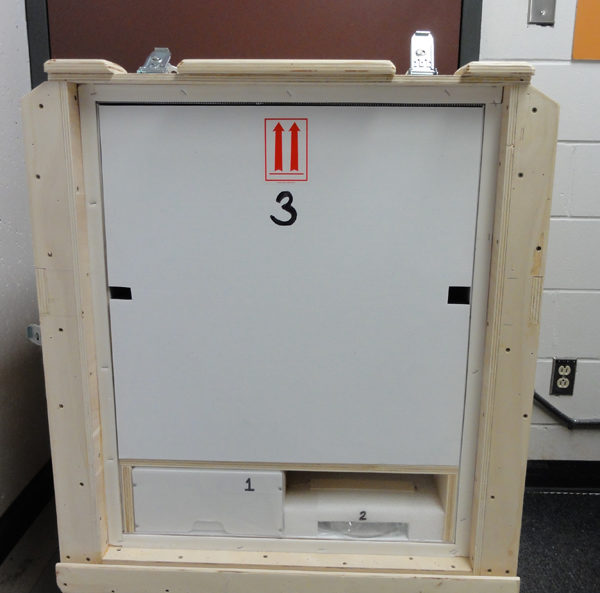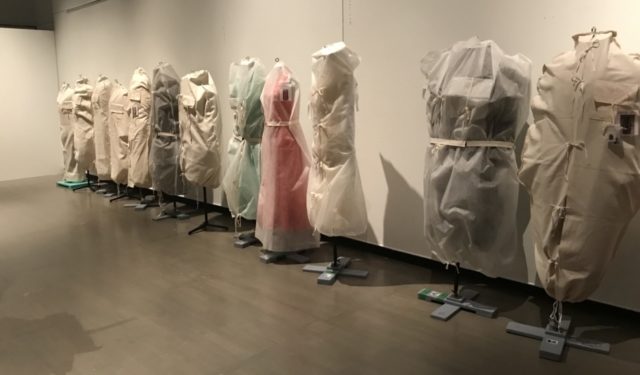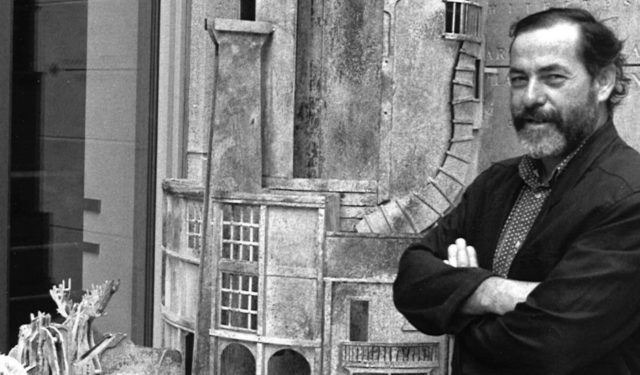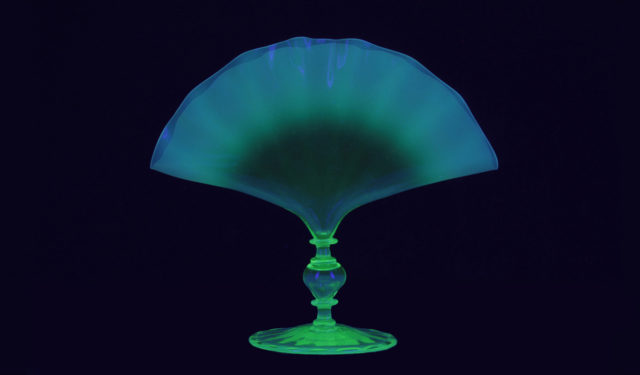Travel preparations
Discover how state-of-the-art tools can facilitate the construction of packing cases for Museum artefacts.
July 18, 2019
When travelling, most people opt for luggage that is as small and light as possible, to avoid extra baggage costs and make moving around easier. But what’s the story when the trip involves an object being loaned to another museum?
We spoke with Conservation Assistant Denis Plourde about the process of constructing the travel crate for a fired clay pot. The object has left the McCord Museum, on loan to several other institutions over the next year.
WHAT IS THE OBJECT IN QUESTION, AND WHERE IS IT GOING?
The precious cargo is a St. Lawrence Iroquoian pot that dates from approximately five hundred years ago. Reportedly found in a cave in Lanark County, Ontario, during the 1840s or 1850s, it was collected by Edward Van Cortlandt, a surgeon with a passion for archaeology and geology.
The pot will be exhibited at the Minneapolis Institute of Art, the Frist Art Museum in Nashville, the Renwick Gallery of the Smithsonian American Art Museum in Washington and the Philbrook Museum of Art in Tulsa. It left the McCord last May and will return home in September 2020. Quite a trip!
I IMAGINE THAT INSTEAD OF BEING SMALL AND LIGHT, THE CRATE USED TO PROTECT THE POT HAD TO BE PRETTY STURDY. WAS IT SPECIALLY MADE?
Absolutely! Before agreeing to lend an object from the collection to another museum, we have to assess the risk of possible damage. Our job is to ensure that the item can travel safely and return to the McCord in exactly the same condition as when it left. In making the packing case, we were aiming to create a custom-made container whose interior exactly mirrored the shape of the object, so as to protect it from all potential accidents.
CAN DIGITAL TECHNOLOGIES BE USEFUL WHEN MAKING PACKING CASES FOR TRANSPORT?
3D scanners produce digital files with volumetric images that help enormously in creating the 3D cushioned forms, or cradles, designed to hold objects securely inside shipping crates. Some items are hard to digitize, though – objects made of clear glass, for example, and mirrors, whose surfaces create too many reflections to be successfully digitized..
IN THE CASE OF THIS POT, WHAT TECHNIQUES DID YOU EMPLOY IN CONSTRUCTING THE PACKING CASE?
First we scanned the pot using a Raster scanning device. Then, we employed a 3D modelling app to manipulate the 3D files and obtain a negative image of the object.
From these files, we used CNC (computer numerical control) to create a 3D cushioning cradle. This fabrication technique involves the removal of material, in contrast to the classical 3D printer, where material is added. The great advantage of this method is that it can be used with a variety of materials. In this case we chose a polyethylene foam (EthafoamTM type D), which is dense enough to immobilize the object without losing its shape through compression. In addition, this foam is chemically stable and can be placed in direct contact with an object.
It was also important to protect the object’s surface. For this, we lined the cradle with polyester wadding covered in TyvekTM, a non-woven fabric made of polyethylene fibres that has a very smooth finish. This ensured that the clay surface of the pot would not be subject to abrasion.
ONCE THE OBJECT HAD ITS SPECIAL CRADLE, WHAT NEXT?
The next step was to install the polyethylene foam cradle inside a packing case. We opted for the double crate technique. As discussed earlier, the first stage involves immobilizing the object inside a material that does not change shape under pressure. The object and the cushioning material are fixed inside a first crate, ideally made of wood. Depending on the weight of this first crate, we need to choose a foam of the right density: it has to cushion the first crate within the second and absorb shocks, but be able to subsequently regain its initial shape. We generally use an ester–based polyurethane foam similar to the type used to upholster furniture.
HOW LONG DOES IT TAKE TO CONSTRUCT A DOUBLE PACKING CASE LIKE THIS?
Using CNC to create the cushioning cradle saves a huge amount of time, particularly if the object is a complex shape. We’d previously prepared another similar pot for travel without using this technology, and it took far longer. As we become more expert in the use of the technology, we’ll save more and more time. That said, the time and cost of this work are unavoidable: we have to ensure the safety of the objects, which are rare and precious, as well as being fragile.
ARE 3D TECHNOLOGIES OFTEN USED AT THE MCCORD WHEN CONSTRUCTING SHIPPING CRATES?
This is the first time we’ve employed the method, and as far as I know it hasn’t yet been used in other museums. We have to expect that digital tools, which are incredibly precise, will eventually replace traditional artisanal methods. For the moment, the high cost of the necessary equipment is an obstacle. In my view, we need to allocate budgets that will allow us to exploit the advantages and improvements offered by these new technologies. There’s no question that they will enable us to better protect the objects in our collection, not only during transport, but also in the contexts of exhibition, conservation and documentation.
Learn more on iroquian pot
For its first collaboration with the Contemporary Native Art Biennial, the Museum will host in 2024, Kanien’kehà:ka artist MC Snow. In two original works, the artist explores the messages and emotions conveyed by the Kanien’kehá:ka objects in the Museum’s Indigenous Cultures collection.
“What set us apart from different communities was our pots and our ways of communicating symbols on the pots. For me, pots have always been objects that carry something. We place things in pots to contain and protect them. These are objects and knowledge that we preserve for the future, and therefore for generations to come.”


